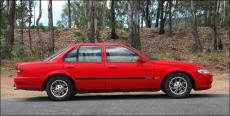Flywheel Energy Recovery System
 F1 technology being relevant again to road cars? Surely not! An interesting series of press releases:
F1 technology being relevant again to road cars? Surely not! An interesting series of press releases:
First application of mechanical ‘kinetic energy recovery system’ with major Formula 1 team
On the 5th June 2007 Torotrak Plc announced a licence agreement with Xtrac Ltd to use Torotrak’s traction drive technology to develop highly efficient and compact continuously variable transmissions (CVTs) for application in a new mechanical kinetic energy recovery systems (KERS) proposed for Formula 1 (F1) motor racing.
Further to this, Torotrak Plc is pleased to confirm that a major F1 racing team has become the first customer for the mechanical KERS system. This F1 team will be supplied with KERS technology through Silverstone based Flybrid Systems LLP, an innovative engineering company focused on research and development of hybrid vehicle technology, who will source Torotrak’s full-toroidal CVTs used in their KERS systems directly from Xtrac Ltd.
Dick Elsy, chief executive at Torotrak, stated: “the rapid movement from concept to application with a significant F1 racing team highlights the benefits of the mechanical KERS system and its ability to contribute to improved performance. This is also a significant step towards acceptance of Torotrak’s technology for use in mainstream road cars to provide improvements in performance, fuel economy and greenhouse gas emissions.”
- » Continue reading or Comments (2)

 Julian Edgar, 50, has been writing about car modification and automotive technology for nearly 25 years. He has owned cars with two, three, four, five, six and eight cylinders; single turbo, twin turbo, supercharged, diesel and hybrid electric drivelines. He lists his transport interests as turbocharging, aerodynamics, suspension design and human-powered vehicles.
Julian Edgar, 50, has been writing about car modification and automotive technology for nearly 25 years. He has owned cars with two, three, four, five, six and eight cylinders; single turbo, twin turbo, supercharged, diesel and hybrid electric drivelines. He lists his transport interests as turbocharging, aerodynamics, suspension design and human-powered vehicles.







